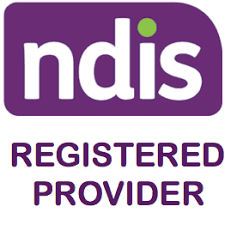Defining emotions
Emotions exist as an essential part of human nature. Emotions stimulate us to react and respond to events. We all experience a variety of emotions on a daily basis, including:
- Physical emotions (e.g. hurt, sore, sick, nauseous, tired, hungry, thirsty, cold and hot),
- Positive emotions (e.g. happy, OK, content, very happy), and
- Negative emotions (e.g. sad, angry, anxious, afraid, nervous, bored, confused, lonely and embarrassed).
Defining emotional regulation
No matter who we are, where we are or how old we are, we all face stressful situations. We don't always have a choice about many of the stressful things that happen to us in life, but we do have a choice about how we emotionally manage these situations.
We've all experienced being stuck in a traffic jam a stream of cars for kilometres ahead and behind us. As we think about the waste of precious time and fuel, our blood pressure begins to rise. We prepare to scream a barrage of scathing remarks at the cars ahead of us. At the last moment, the thought crosses our mind that getting angry, frustrated or distressed will only make the situation worse. Therefore, we opt to pacify our irritation by using one or more coping strategies. We could listen to the radio, eat something, look around at people and their cars, or think about the weekend. As you can see, if you don’t manage your emotions, then your emotions will manage you (Childer and Rozman, 2006).
Infants begin displaying and managing their emotions as early as the first weeks of life. However, there are wide variations in how children manage their emotions. One child may become easily frustrated and cry with even moderate levels of stimulating play.
Whereas another child may enjoy rough play and seek out more exciting events (Rothbart & Rueda, 2005). As the child's brain develops, their emotional regulation skills become more sophisticated (Kopp 1982; Blair & Diamond 2008).
Emotional regulation is the ability to identify, understand, express and manage emotions in a healthy way. Some individuals (children, adolescents and adults) need direct, systematic and explicit teaching of emotional regulation skills.
To learn more about this topic you can attend a webinar: 'Teaching Emotional Regulation Skills'
Importance of emotional regulation
If there is a mismatch between the emotion the individual is experiencing and their emotional regulation skills, the individual can become overwhelmed by the emotion. This is called emotional dysregulation. When the individual becomes emotionally dysregulated, they may react in challenging ways that can have a negative physical, psychological and emotional impact on the individual as well as the people around them. These behaviours can look like intense anger outbursts (going from 0-10 in nanoseconds), becoming verbally or physically aggressive, self harm, withdrawing, damaging/destroying property and many other socially inappropriate behaviours.
Example: Nancy is watching TV. Her brother Edmond comes in and sits next to her. Soon he is talking loudly and playing with their pet dog Leo. Nancy tells her brother to stop talking as she is trying to concentrate and watch TV. Edmond appears to ignore her and keeps playing with Leo using an animated loud voice.
Nancy has difficulties with emotional regulation which means:
- She gets easily frustrated and overwhelmed at seemingly minor, everyday inconveniences and stressors.
- She does not know what healthy strategies she can use to regulate her emotions and stay calm.
- She also has difficulties with knowing what other solutions she could try to address the problem.
As Nancy does not have the skills needed to cope, she resorts to hitting her brother, who is likely to leave the room crying.
Hence, developing emotional regulation skills is a key component of overcoming these behaviours and leading a healthy, fulfilling, and happy life.
Developing Emotional Regulation Skills
Rainbow of Emotions App: Teaching Emotional Regulation Skills Step by Step (www.rainbowofemotions.app) helps the individual (child, adolescent or adult) to identify, express and manage their emotions in a healthy, safe, and socially acceptable way. It is a web based app that can be use on the PC, laptop, tablet or phone. Accompanying the app is a facilitator's guide and workbook titled ‘Taking CHARGE of my Rainbow of Emotions’.
The Rainbow of Emotions app allows you to personalise the CHARGE toolkit by including tools the individual already uses and work for them, add select tools from the library provided in the app. For each tool the app you can choose the colour, picture, sound and name for each tool.
A rainbow is an arch made up of different coloured parallel lines that forms in the sky in special circumstances. Residing within each one of us is our very own Rainbow of Emotions, where each colour of the rainbow represents a different emotion.
In the app you can set up two types of rainbows. One rainbow to represent physical emotions such as hungry, thirsty, tired or pain and another rainbow to represent negative emotions such as angry, worried, sad or jealous. For each rainbow the app helps the individual discover and design their own rainbow of emotions.
You can choose the colour, picture, sound and name with the individual for each line in the rainbow to identify and express their emotions. Help the individual learn how to recognise the symptoms of the different feelings they are experiencing and label them accurately.
Teaching Emotional Regulation Skills
Emotional regulation is a skill that is learned. Some children develop a better sense of regulating and controlling their emotions than others in the natural course of growing up but others do not develop the skill so well. Please refer to the article Teaching Emotional Regulation Skills. It is aimed at helping you as parents, carers, teachers or health professionals, to teach emotional regulation skills.
References
- Blair, C., & Diamond, A. (2008). Biological processes in prevention and intervention: The promotion of self regulation as a means of preventing school failure. In Development and Psychopathology, 20: pages 899-911.
- Childer, D. L. & Rozman, D. (2006). Transforming anxiety: The heart math solution for overcoming fear and worry and creating serenity. Canada: New Harbinger Publications.
- Frankl, V. E. (2000). Man's search for meaning. Boston: Beacon Press.
- Kopp, C.B. (1982). Antecedents of Self-Regulation: A Developmental Perspective. In Developmental Psychology. 18: pages199-214.


